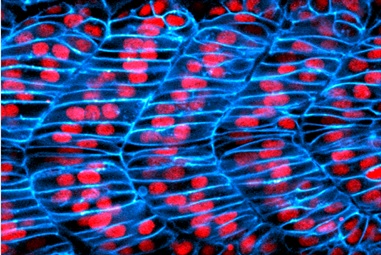Timothy Saunders
Technical Summary
 Organogenesis is both a biophysical and biochemical process. The shaping of the organ integrates mechanical cues from the level of a single cell up to the whole tissue. Understanding organ formation is thus an inherently multi-scale problem. We require information at a range of both spatial and temporal scales to construct meaningful models of how organs develop.
Organogenesis is both a biophysical and biochemical process. The shaping of the organ integrates mechanical cues from the level of a single cell up to the whole tissue. Understanding organ formation is thus an inherently multi-scale problem. We require information at a range of both spatial and temporal scales to construct meaningful models of how organs develop.
In my lab, we focus on understanding the dynamics of developmental processes. Consequently, we do a lot of live imaging of developing organisms. We have developed biological tools, such as optogenetically tuneable proteins, to enable us to perturb developing systems in a controlled manner. We use a range of light microscopy techniques, including light-sheet and two photon microscopy. Recent years have seen substantial improvements in both imaging and image analysis techniques. This means that we can now access the formation of organs at multiple scales. For example, we can image the developing zebrafish skeletal muscle sufficiently fast and with high enough spatial resolution to observe individual muscle fusion events, yet also observe the tissue scale processes occurring at the same time. We have also been developing quantitative image analysis tools, that enable us to extract important information from our imaging.
We aim to integrate our quantitative live imaging within biophysical models. These models are used to test our assumptions about how the tissues form, and also to generate testable hypotheses that we can then check in the living organism. By integrating biology, microscopy and biophysical modelling within the lab, we are able to tackle challenging interdisciplinary and multiscale problems, such as how the structures of the skeletal muscle and heart form during development.
Selected publications:
1. U. Bezeljak, H. Loya, B. Kaczmarek, T. E. Saunders* and M. Loose*. Stochastic activation and bistability in a Rab GTPase regulatory network. PNAS 117, 6540-6549 (2020)
2. A. Huang, J.-F. Rupprecht and T. E. Saunders*. Embryonic geometry underlies phenotypic variation in decanalized conditions. ELife 9, e47380 (2020)
3. S. Tlili, Y. Jianmin, J.-F. Rupprecht, M. A. Mendieta-Serrano, G. Weissbart, N. Verma, X. Teng, Y. Toyama, J. Prost and T. E. Saunders*. Shaping the zebrafish myotome by differential friction and active stress. PNAS 116, 25430 (2019)
4. H. Connahs, S. Tlili, J. van Creij, T. Y. J. Loo, T. Banerjee, T. E. Saunders* and A. Monteiro*. Activation of buttery eyespots by Distal-less is consistent with a reaction-diffusion process. Development 146, 169367 (2019)
5. J. Yin, R. Lee, Y. Ono, P. W. Ingham* and T. E. Saunders*. Slow muscle specification and migration in the myotome is dependent on precise temporal regulation by Shh and non-autonomous FGF signaling. Developmental Cell 46, 735 (2018)
6. L. Durrieu, D. Kirrmaier, T. Schneidt, I. Kats, L. Hufnagel*, T. E. Saunders* and M. Knop*: Bicoid gradient formation mechanism and dynamics revealed by protein lifetime analysis, Molecular Systems Biology 14, e8355 (2018)
7. S. Zhang, C. Amourda, D. Garfield and T. E. Saunders*. Selective Filopodia Adhesion Ensures Robust Cell Matching in the Drosophila Heart. Developmental Cell 46, 189 (2018)
8. A. Huang, C. Amourda, S. Zhang, N. S. Tolwinski and T. E Saunders*. Decoding temporal interpretation of the morphogen Bicoid in the early Drosophila embryo, ELife 6, e26258 (2017)

